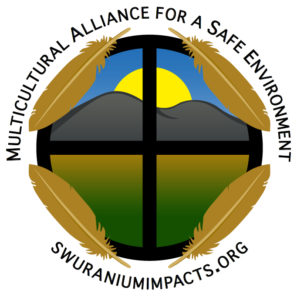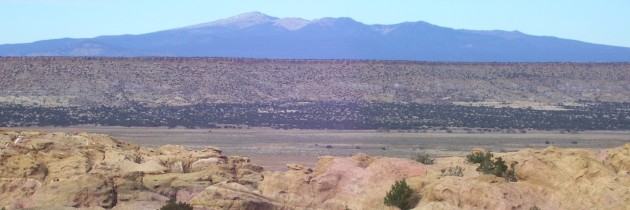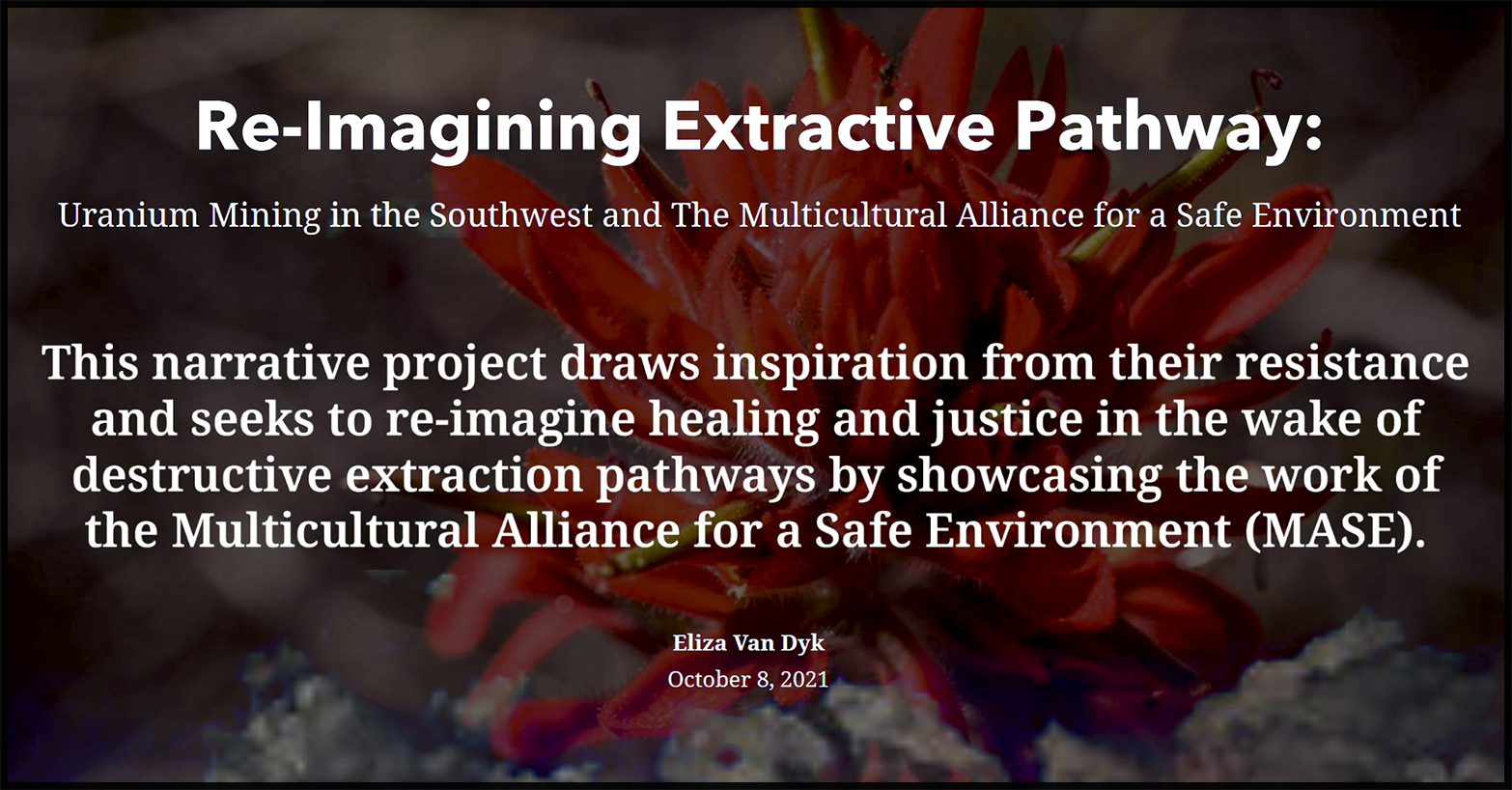Press Release: Zombie Mine Begins to Stir
Wednesday, February 28, 2018
Contacts
Susan Gordon, MASE Coordinator 505-577-8438
Rachel Conn, Amigos Bravos Projects Coordinator 575.770.8327
Eric Jantz, NMELC Staff Attorney 505.989.9022 x 120
Michael Jensen, NMELC Communications and Public Education 505.362.1063
Zombie Uranium Mine Begins to Stir
Mining and Minerals Division Permit Violates State Mining Act
SANTA FE, N.M.— The Multicultural Alliance for a Safe Environment (MASE) and Amigos Bravos filed a Petition for Review with the New Mexico Mining Commission requesting that the Commission review the Mining and Mineral Division (MMD) Director’s radical decision to allow Mt Taylor Mine to go back on “active” or “operational” status despite no realistic likelihood that mining will take place for the foreseeable future.
Eric Jantz, staff attorney at the New Mexico Environmental Law Center, which is representing MASE and Amigos Bravos, said:
“The Director’s decision directly contradicts the New Mexico Mining Act’s plain language, which restricts “operational” mines to those that are producing minerals. The Director has unilaterally created an entirely new category of mine activity – “zombie mines” – that have been given new life in an effort to avoid cleanup.”
The Mt. Taylor Mine, which is owned by Rio Grande Resources (RGR), has not produced uranium since 1990. The permit will allow eight (8) years of so-called “reactivation” activities. However, nothing in the application and documents indicates that there will be mining production. RGR’s own expert testified during the permit hearing that the market would be unfavorable for another 10-15 years.
“Mt. Taylor is a zombie mine,” said Susan Gordon, coordinator for MASE. “It’s neither producing uranium nor is it cleaning up its ongoing pollution. This is simply a game by RGR to avoid having to start reclamation.”
“The Director’s decision means that a mining company can continue making up even highly unrealistic plans for production at some indeterminate time in the future and effectively put off reclaiming a mine forever. Redefining ‘active’ eliminates the Mining Act’s 20-year limit for standby status, which increases the chances that the mine will continue to contaminate the environment.”
The New Mexico Mining Act was enacted in 1993 and allows mines to remain inactive in standby status for a maximum of 20 years before reclamation must be required. In December 2018 Mt Taylor mine will have been on standby status for 20 years. During standby status, mine operators are required to take action to prevent contamination from moving off site or getting into the groundwater, but are not required to initiate full reclamation. A return to active status also does not require reclamation and closeout activities.
“RGR has avoided cleaning up its mess for long enough,” said Rachel Conn, Projects Director for Amigos Bravos.
“Many of the so-called ‘reactivation’ activities mentioned in the permit are activities the mine should have been doing during standby. In its recent decision, the state is failing in its duties to protect groundwater for future generations.”
Petuuche Gilbert, a member of MASE and the Laguna Acoma Coalition for a Safe Environment, said,
“Mt Taylor is sacred to Acoma and other indigenous peoples, but it is equally important to other people. It must not be polluted by uranium mining. It is important to all people for water and its other natural resources.”
###
Background
• The Multicultural Alliance for a Safe Environment (MASE) is a network of groups located in the Grants Mining Belt of northwestern New Mexico that works collaboratively to stop new uranium mines and cleanup wastes. www.swuraniumimpacts.org
• Amigos Bravos is a statewide water advocacy organization dedicated to protecting and restoring the waters of New Mexico. www.amigosbravos.org
• The Mt. Taylor Mine first began producing uranium, on a test basis, in 1979. Test production ceased in 1982. Operations resumed in 1985 and ceased again in 1990
• The Mine received a mine permit under the Mining Act in 1995; its first standby permit in 1999, its second standby permit revisions during 2004-2005; and its third standby permit in 2012, which expired in 2014 because of conditions put on the permit
• The Mt Taylor Mine should end its maximum 20-year standby status in 2019, both because its first standby permit was issued in 1999 and because its third permit expired in 2014, leaving only a final maximum five-year standby permit left
• December 4th, 2015 – During a standby permit hearing, MASE and Amigos Bravos challenged RGR’s unreasonable predictions of the economic viability of the mine in the face of a continued depressed international uranium market
• December 29, 2017 – The New Mexico Mining and Minerals Division issued a Return to Active Permit for RGR’s Mt. Taylor Mine






